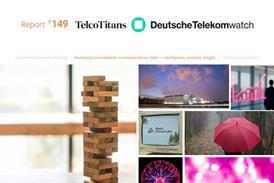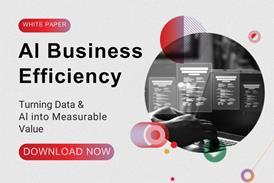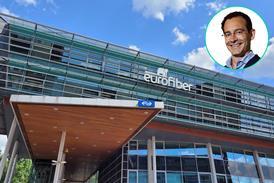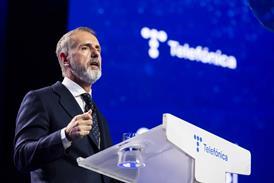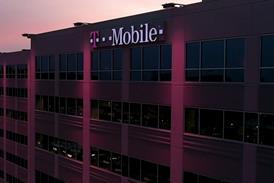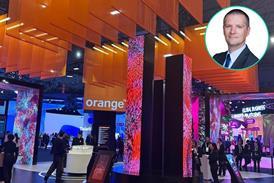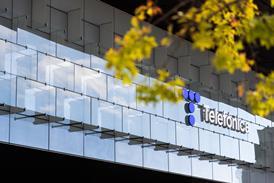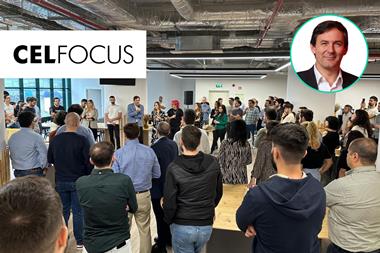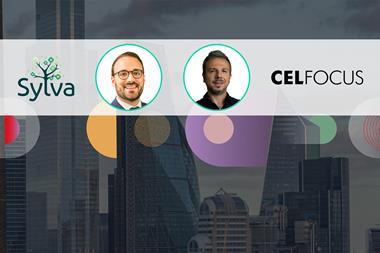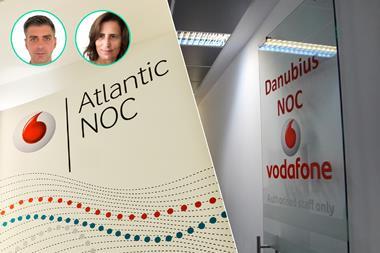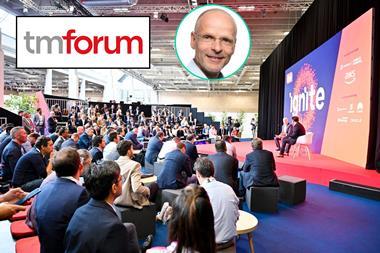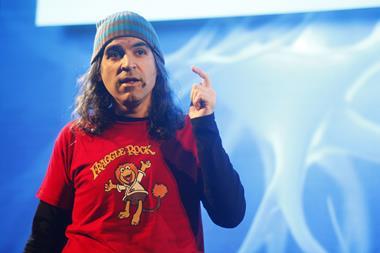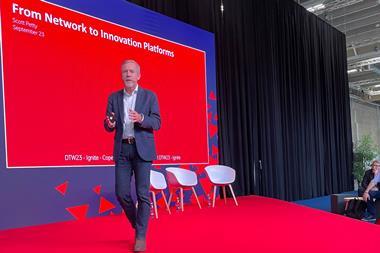- Artificial intelligence, machine learning and sub-second processing capabilities introduced into Vodafone’s monitoring of IoT core services connectivity for oversight of hundreds of millions of IoT connections.
- Upgrade driven by need to address client frustration over slow fault resolution, as well as internal desire for efficiency improvement.
- Scalability also key: parameters of project indicate Group is planning for a massive uplift in IoT device volume.
- Integration delivered with support of long-time IT partner Celfocus, and across Amazon Web Services infrastructure.
- Following investment, operator assessing where else AI-/ML-enhanced monitoring could be applied within enterprise services portfolio.

In this article
1. The drivers: client demands melded with need to scale and modernise2. The challenge: Group needed to trade up on tech
3. Visibility in the cloud
4. Vodafone’s Basarkar: journeying into the self-healing
5. Celfocus’ Penedo: self-healing networks: sunlit uplands ‘within sight’
Vodafone is preparing to extend new, “next-generation” monitoring capabilities across its enterprise services portfolio, in a bid to improve customer satisfaction and help its own ongoing cost-cutting drive.

The plan follows on with the deployment of an artificial intelligence and machine learning-equipped monitoring solution for its Internet of Things user base, supported by systems integrator Celfocus and delivered over Amazon Web Services cloud infrastructure. The aim is to automate and accelerate problem resolution for clients of connected device division Vodafone IoT, helping improve efficiency and quality of service, and progress down the path towards “self-healing” networks.
Sampada Basarkar, Director of Products & Platform Engineering at Vodafone, presented the project at TM Forum’s recent DTW23—Ignite industry event in Copenhagen, calling it a “beginning”. She also guided that the operator’s engineering department is “in discussions right now” about other areas to apply new, AI-/ML-based monitoring techniques.
“ Within Vodafone Business, we have lots of different portfolios. We have to be constantly looking at what needs to be done and how we reduce our operational costs. How do we ensure that we go towards more proactive monitoring and zero-touch support? This is the beginning use-case that we are on. There will be more use-cases; there are more products. So we’ll be on a continuous journey. ”
Basarkar.
The drivers: client demands melded with need to scale and modernise
Basarkar described the business case for the IoT monitoring revamp as made up of three interlocking drivers.
For one, Vodafone’s IoT client demands are particularly focused around the need for more speed when it comes to problem identification and resolution.
At the same time, Vodafone’s network operations team was faced with the challenge of processing a huge volume of network alerts (“2,000 per day”, typically), and sifting false positive results (the vast majority) from those genuinely requiring action — which was putting a brake on velocity. The operator “wanted to change from a reactive to proactive approach to make sure we increase customer satisfaction by detecting anomalies much quicker”, said Basarkar.
Secondly, as an internal driver for change, Vodafone wanted to bring more automation into how it went about network connectivity monitoring — particularly, again, around anomaly detection.
By introducing ML algorithms into its system, the operator aimed to significantly cut down the time engineers took to validate each alarm (around 20–30 minutes) and then assess their impact (a further 20–60 minutes). It was also, more broadly, making the first steps on a longer term “journey to self-healing networks”, with the promise of significantly improved efficiency and effectiveness, said Basarkar.
“ We want to move towards zero-touch support. Because if you have to [meet] these SLAs, you can’t do it just with human resources; you have to have some sort of machine learning algorithms to be able to quickly detect and manage these situations at speed. ”
Basarkar.
The third element of the upgrade was to ensure Vodafone was positioned to support the growth it anticipates will emerge from IoT adoption. Basarkar indicated the new solution had to be capable of handling the huge volume of traffic data coming in from Vodafone IoT’s user base, which is currently processing two billion call detail records (CDR) per day.
It was also designed to scale next-gen monitoring to as many as one billion devices (significantly more than the 162.3 million IoT SIM connections Vodafone was serving when it last reported numbers, at 31 March 2023).
The challenge: Group needed to trade up on tech
Backdropping all three of the drivers for the project was that Vodafone’s legacy monitoring tech was a major constraint on development of new capabilities.
Again, the main issue was velocity, as the old solution was ill-equipped to allow “automatic anomaly detection, and move towards self-healing”, Basarkar said.
“ We were getting 2,000 alerts per day, and, if it took 20 minutes to analyse every single alert, we were spending a lot of time trying to just weed out false positives in that data. That led us to think about what needs to be done in this area from a next-generation monitoring perspective. And that’s why we partnered with Celfocus. ”
Basarkar.
Visibility in the cloud
With the upgrade, many of the functions within Vodafone’s IoT Core Services Connectivity monitoring capabilities and operations can be switched from manual to automated processes, enabling the operator not only to resolve issues faster but also gain “increased… decision intelligence”, said Basarkar.
- In the realm of real-time processing — the first stage in the overall monitoring process — the project team overhauled Vodafone’s pre-processing mechanisms, as well as working with Celfocus to build in new solutions based on open-source technology and AWS infrastructure. This, Basarkar said, moved the operator away from suffering “data latency” of more than 20 minutes and enabled it to gain “real-time” capability instead. “With the amount of data that we were getting, this was a massive problem that we had to go and solve”, she said. “If you look at the peak rate, we monitor about 30,000 CDRs per second at the peak rate. And it now happens with sub-second latency”.
- The second step, of anomaly detection, was where AI/ML capabilities were brought in, automating the process of identifying traffic anomalies and automatically flagging network alerts.
- The final stage, of data analytics, also saw the implementation of new software and processes to automate functions such as impact analysis to suggest service priorities.
At the same time, Vodafone increased the range of historical data that was available to analyse, to open up more insight on fault patterns over time.
The solution is designed to enable Vodafone’s ops team to “review and filter the data in a way that the data is meaningful for them and they are able to analyse these records and alarms very quickly”, according to Basarkar.
This analytics component has been key for improving visibility into patterns of anomalies and improving speed of resolution, she indicated.
“ Rather than looking at just a single instance, we’re looking at multiple instances to see if the same pattern is exhibited over and over again… It’s really just making sure that you analyse the data over a [greater] number of records. ”
Basarkar.
| Project | Focus |
|---|---|
| Source: Celfocus. | |
|
Vodafone Portugal |
Celfocus and Vodafone have collaborated over the past two years to advance Vodafone’s data strategy and migration to cloud. Utilising Vodafone’s mobility data, the partnership has successfully delivered various analytics services to enterprise clients, including near-real-time data flows. More recently, leveraging the World Youth Day event in Lisbon, the two companies have further partnered to elevate market awareness about the business value of Vodafone’s data across multiple industry verticals. |
|
Vodafone Group |
Celfocus collaborates with Vodafone on the Safer Transport for Europe Platform (STEP), a cloud-based solution aimed at enhancing road safety across Europe. STEP tackles critical issues like data fragmentation and information silos and is currently operational in Germany, Spain, and UK. |
|
Vodafone Business UK |
Aimed at attracting and engaging enterprise customers with thought leadership, this initiative primarily focused on content but also took advantage of advanced digital marketing best practices, especially those concerning SEO, personalisation, A/B testing, analytics, and integration with the latest technologies in marketing automation. |
|
Vodafone Group |
This project delivered a cognitive solution automating network end-to-end incident detection and resolution to improve operational efficiency for first-line operations of the Vodafone Global NOC (Vodafonewatch, #187 and #198). Live since 2018, the solution leverages advanced analytics, AI/ML, automation, and a unified portal. |
|
Vodafone Portugal |
As part of Vodafone Portugal’s BSS core IT systems, this Siebel upgrade project was a critical piece of the operator’s ongoing digital transformation. There was a strong need to automate and streamline the entire development process to achieve shorter release cycles while maintaining the defined quality standards. Benefits included reduced release approval time and increased regression testing coverage. |
|
Vodafone Group |
Delivery of a central, cloud-based multi-tenant digital TV analytics platform, designed to easily evolve from descriptive to predictive and prescriptive analytics serving local OpCos and content providers with business and operational KPIs, calculated either in batch or real time. Live since 2017, with ten markets now onboarded, the solution has delivered customer service improvement and cost reduction (Vodafonewatch, #174). |
Basarkar: journeying into the self-healing
While effusive about the outcome of the project, Basarkar stressed that Vodafone has grander ambitions when it comes to extracting value from its network monitoring functions through AI/ML.
She described the operator as having become “proactive” when it comes to IoT network monitoring, having previously been “reactive”.
Vodafone has not yet evolved its capabilities to a state of full “self-healing”, where it reacts “autonomously” to failures. Basarkar’s slides, for instance, indicated that some areas of the fault response function (or “healing”) remain manual, such as escalation. The vision is for this to be made significantly more automated once Vodafone has “analysed enough data and built the right processes”.
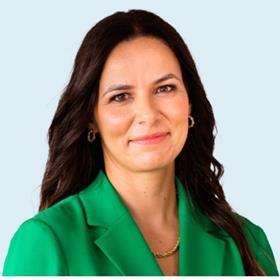
Penedo: self-healing networks: sunlit uplands ‘within sight’
In the same DTW23—Ignite session, Carla Penedo, Director of Offer Development & Innovation at Celfocus, framed self-healing networks as a work-in-progress for operators and their technology partners, but at the same time a realistic vision.The promise of self-healing capability will mean the network can “recover from a fault and handle it autonomously, proactively, without human intervention, at scale and much faster”, she said. It also has the potential to accurately “anticipate faults and prevent outages”, and in doing so “guarantee customer service excellence without performance impact”, she added.
For Penedo, the industry has “not quite” reached this level of capability but is “on the way”, helped by advances in three key areas of tech: AI/ML, for data-driven decision-making; automation, for speed; and network-as-a-service systems, to “abstract” network complexity.
“We are continuously making steps towards that end game [of self-healing networks]”, said Penedo: “we know where to go; we also have a very good idea of what we need to get in place to get there; and we know that we have the right mindset and the right capabilities to support our clients in this journey”, she added.
The next generation customer service solution is moving Vodafone one step further in the journey towards self-healing networks. “By offering real-time monitoring and advanced anomaly detection, the system is laying the groundwork for a network that can identify issues and potentially resolve them autonomously in the future”, said Penedo.
Penedo highlighted that the end result is a solution that significantly reduces both Mean Time To Detect (MTTD) and Mean Time to Repair (MTTR), leading to a faster, more accurate, and highly efficient operational environment.
In concluding the discussion on self-healing networks, Penedo remarked “It’s not just about keeping up with the demands of the modern, hyper-connected world; it’s about staying one step ahead”.
Celfocus has also released a whitepaper, Embracing the Next Generation of Network Automation, looking at the need, challenges, strategies, and key pillars in moving towards zero-touch network management.
Topics
- AI/GenAI/ML (artificial intelligence, agentic, machine learning)
- Automation
- AWS (Amazon Web Services)
- Carla Penedo
- Celfocus (Novabase)
- Cloud
- Data science (analytics)
- Digital transformation
- DTW Ignite (TM Forum)
- Events
- Eventwatch
- IoT (Internet of Things, M2M)
- Sampada Basarkar
- Strategy & Change
- System integration
- TelcoFutures
- TelcoTitans Industry Content
- Transformation (change)
- Vodafone Europe
- Vodafone Group
- Vodafonewatch


